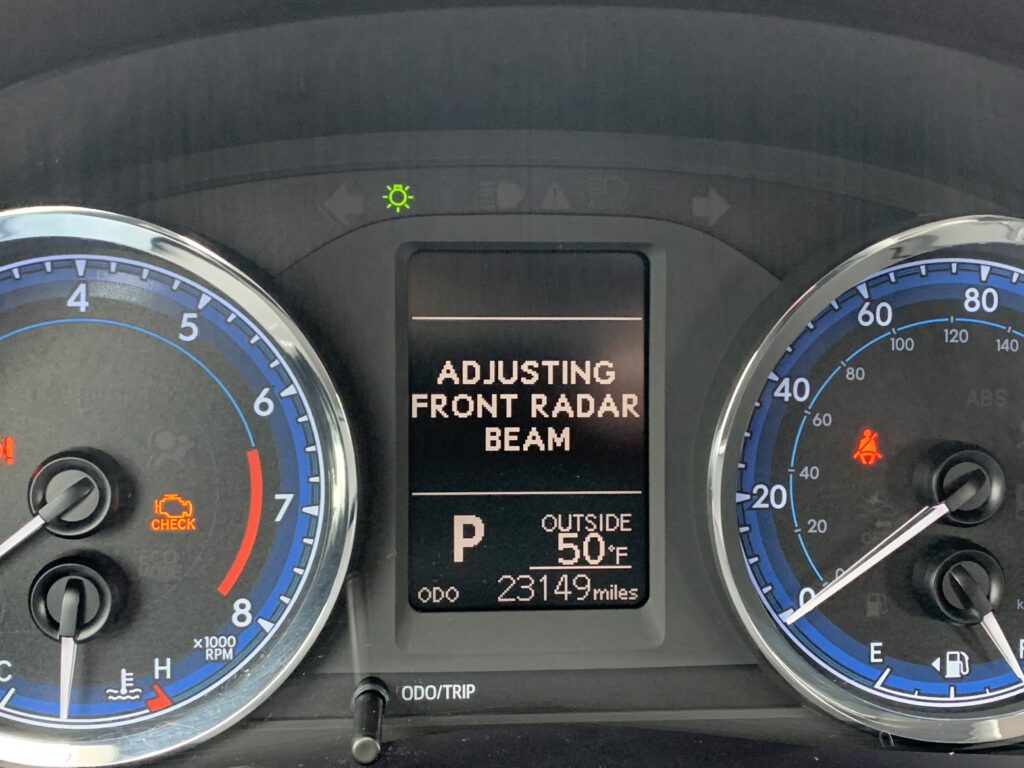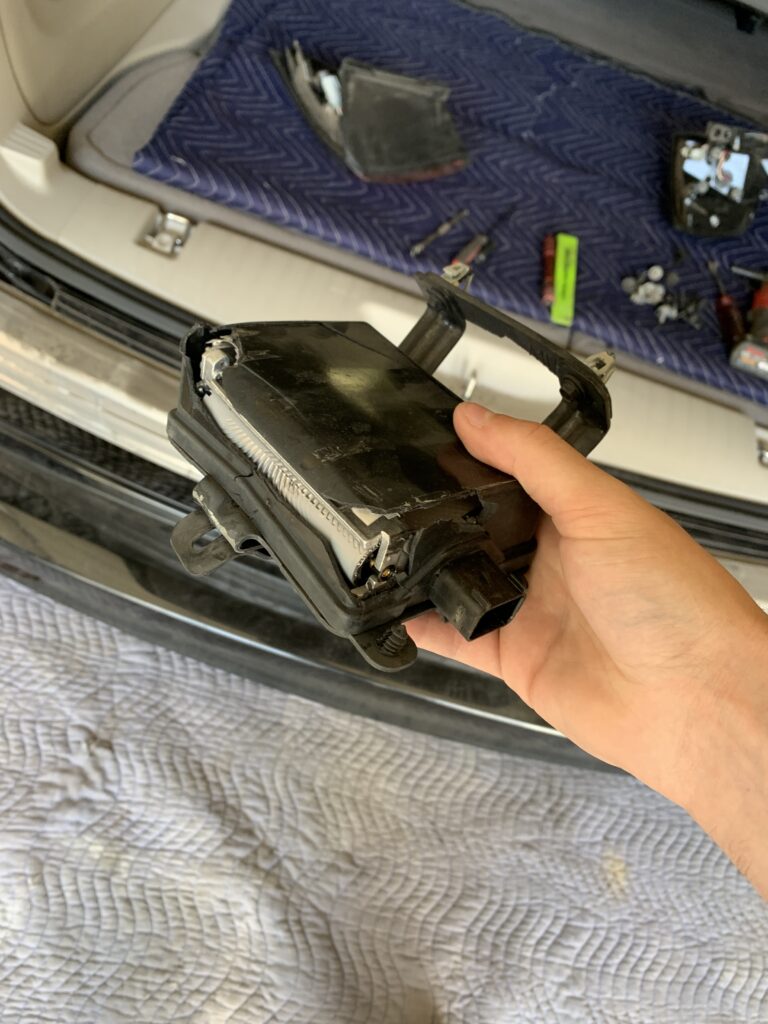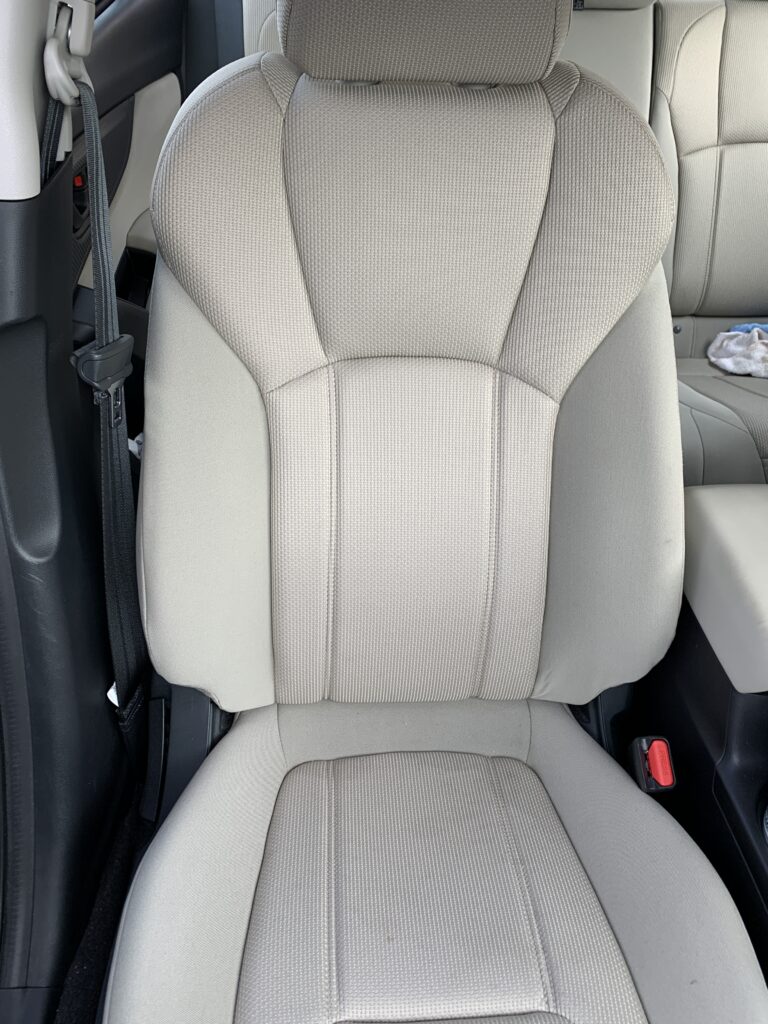Factory Reset uses officially licensed Toyota software (TechStream w/ Mongoose Pro OBD II), calibration equipment, and uses statements from the Toyota Information System to qualify calibrations
Toyota requires that a pre scan be performed if a vehicle is involved in a collision that may affect any electrical systems. Additionally, Toyota strongly recommends that a “Health Check” (via TechStream software) be performed before and after each repair.
Source: Toyota CRIB 191
Common Toyota ADAS Systems
Occupant Classification System (OCS)
Millimeter Wave Sensor
The MMWS, located behind the front grille, is designed to work in tandem with the pre-collision system in front of to determine the distance between vehicles/objects and safely slow or stop the vehicle when approaching too close.
When to perform Millimeter Wave Sensor Calibration

- Whenever the sensor is removed and inspected
- Sensor is replaced
Blind Spot Monitor
The Blind Spot Monitor, located on either quarter panel or inside bumpers, is purposed with detecting vehicles that are outside the view of mirrors and alerting the driven with a light indicator (usually located on the mirrors) and/or an audible beep.
When to perform Blind Spot Calibration

- After removal and inspection
- After replacement
Forward Recognition Camera
The Forward Recognition Camera helps determine the cars position within lanes and activates lane departure warnings, or in some cases, lane keep assist, which will actively steer the car to maintain lane position. This system can be affected by weather or sunlight conditions.
When to calibrate Forward Recognition Camera

- When camera unit is replaced OR windshield glass is removed and installed
Steering Angle and Torque Sensors
The Steering Angle Sensor measures the steering wheel position and rate of turn. Calibrating this is crucial as its data is used in reference for many ADAS systems, including but not limited to, adaptive cruise control, lane keep assist, and adaptive headlights.
When to Calibrate the Steering Angle and Torque Sensors

- Wheel alignment has been performed
- Suspension or underbody components are removed/replaced
- ECU has been replaced
- Electric power steering column sub-assembly has been replaced
- There is a difference in steering effort between turning left and right
Panoramic View Monitor
Panoramic View Monitor is a series of cameras on the exterior of the vehicle (usually grille, both mirrors, and rear gate/lid) that form a variety of views for the driver to safely inspect their surroundings.

- Removal and installation or replacement of steering sensor
- Parking ECU replacement
- Vehicle height changes due to suspension or tire replacement
- Front, left, right, or rear television camera assemblies are replaced, removed, or installed
- Replacement of more that 2 parts in the Panoramic View Monitor system
Intelligent Clearance Sonar
The Intelligent Clearance Sonar (ICS), located on front and rear bumpers, is usually only active at low speeds and aims to alert the driver via audible beeps and/or dash display as to obstacle around the vehicle.
When to Calibrate Intelligent Clearance Sonar

- Front/rear bumper replacement
- Ultrasonic sensor is removed or replaced
- Vehicle ride height changes
- Clearance warning ECU assembly is replaced
Occupant Classification System
The Occupant Classification System (OCS), located in the passenger seat(s), is a sensor that uses weight to determine if it is occupied and then enables the supplemental restaint system (SRS) to deploy airbags and/or restrict movement of the seatbelt during a collision.
When to perform Occupant Classification System Calibration

- Most Toyota’s between model years 2006 and 2017 require this when involved in any collision. (see calibration chart on the Factory Reset “Cheat Sheet“, Page 8)
- Occupant detection ECU is replaced
- Accessories (setback tray, seat cover, etc.) are installed
- the front passenger seat is removed from the vehicle
- One of the bolts used to install the passenger seat is removed or installed
- The passenger airbag ON/OFF indicator (“ON”) comes on when the front passenger seat is not occupied
- An occupant classification sensor collision detection DTC is output due to an accident or a collision
With our access to Techstream and Toyota Information System, we are also able to provide other various calibrations/programming as well as raw data performance readings and latest repair procedures on all modern Toyota, Lexus and Scion vehicles
